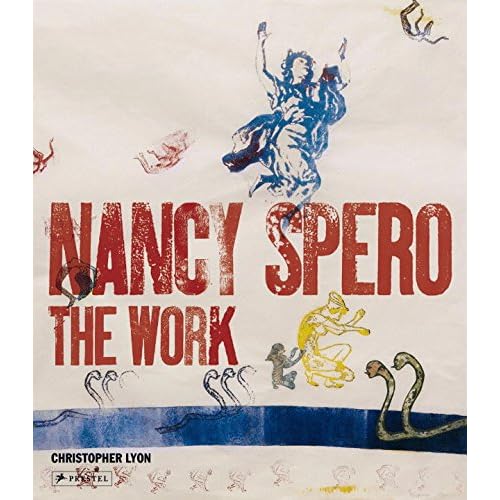Nancy Spero: The Work
Category: Books,Arts & Photography,History & Criticism
Nancy Spero: The Work Details
From the Inside Flap This definitive monograph explores Nancy Spero's entire body of work, revealing a pioneer of feminist art and a key influence on contemporary art.Among the most prominent women artists of the past half century, Nancy Spero (1926-2009) created a body of work of astonishing emotional range, from fierce anger, directed against war and sexism, to joyful sexual release. Working in isolation for decades, she was a central figure in the rise of women artists that transformed international art in the 1970s and '80s before gaining international recognition in her final two decades. Read more

Reviews
This book is massive in many ways—size, scope, and vision. In its 13”x12” format and 340 pages, it covers five decades of Spero’s exceptional work, and it unfolds the far-reaching and long-sighted vision of an inspired artist.On the cover there is a fragment of one of Spero’s scrolls from the Artaud Codex. In small print, almost obscured by typographical scratchings, are these words from Artaud: “UN MAGNIFIQUE ABSOLU.” That about sums up this volume.It is a lavishly illustrated, beautifully presented and eloquently expressed homage to Spero and her many brilliant endeavors. All aspects of her art are well-represented, from the Black Paris paintings, the Lovers series, the War paintings, The Artaud Codex and the Torture series, to the later installation pieces. Christopher Lyon carefully traces the trajectory of Spero’s emergence as one of the most passionate and clear voices of the feminist experience, and also one of our most oddly overlooked artists.In her best work, Spero maintained a breathtaking balance between word and image, allowing great tension to build between the two and yet constructing great spatial support for the two to conjoin and deliver one succinct message. There is a parallel thread that runs through her personal life with the painter Leon Golub.Spero demonstrated the infinite possibilities that arise when an artist gains control of both language and symbol, especially in the realm of the archetypal feminine. Her results were dynamic and mysterious works. Altogether an exhilarating book that will insure that Spero’s vital vision will remain in consciousness, and her devoted efforts on behalf of the feminist spirit will be recognized and remembered.


